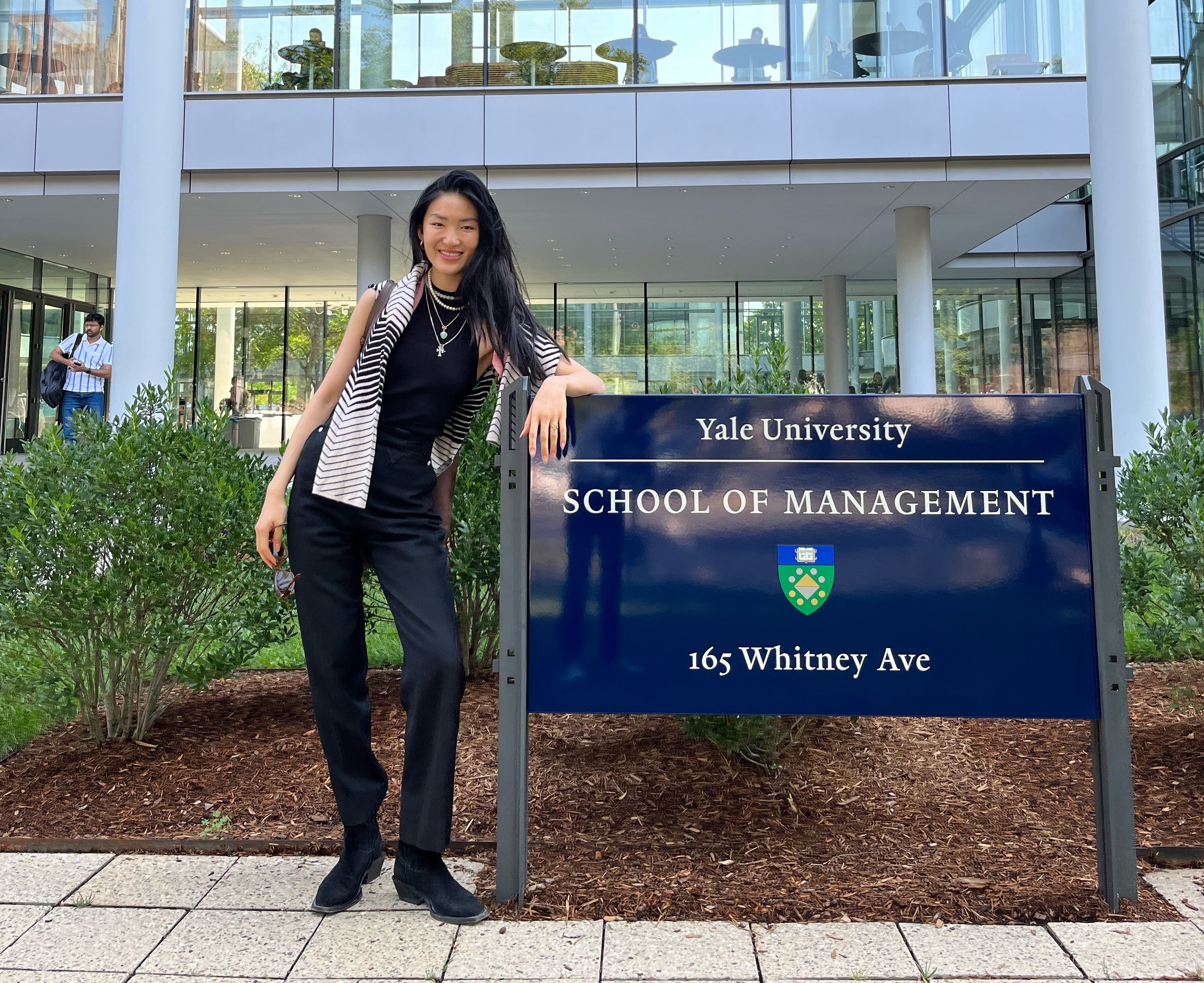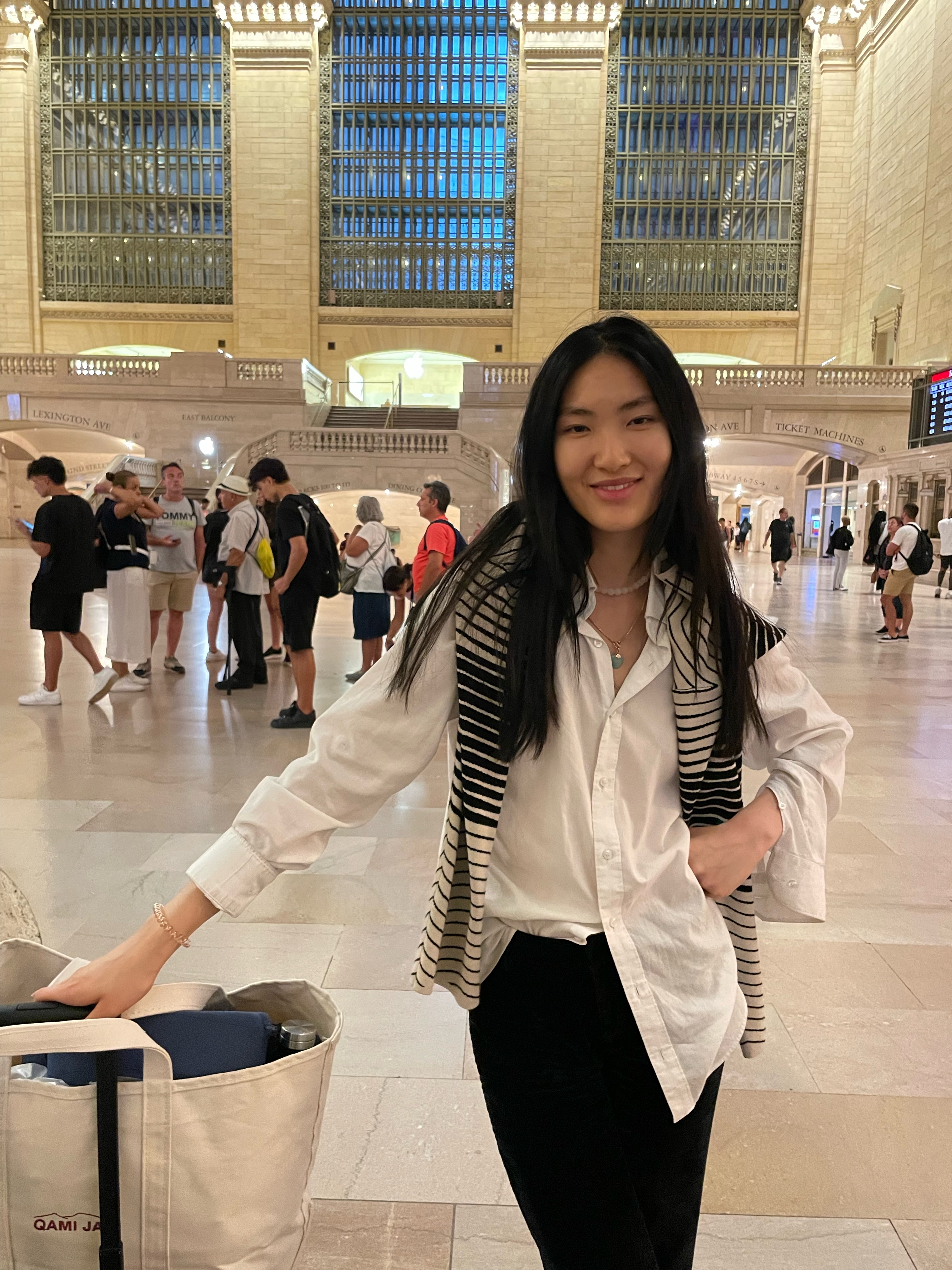Writing to you from her MBA exchange term at Yale, USA, Global Master’s in Management Student Ambassador, Sara-Mey Ngo shares her tried and tested strategy and learnings from the exchange application process with lots of great tips.
The GMiM MBA Exchange Application – How To & Best Practices
I’m on my way to New York as I’m writing this blog post and it still feels quite surreal to be joining Yale School of Management for an exchange this term.
A year ago, I was filled with excitement about starting the Global Master’s in Management (GMiM) programme at LSE and, right from the start, dreamt of this exact moment. That is why it is a true honour to share my path and experience of the application process with all aspiring and incoming GMiM students or simply curious folks out there.
Having received multiple requests regarding the process, I’d like to go through it step-by-step and hope to clarify any questions and doubts.
Moreover, I want to share my strategy and learnings with you. Not to share too much at this point but the application process has been such an eye-opening experience for me: I’ve not only reflected on what I want to do with my studies, but also on who I am as an individual, and why I am doing what I am doing in my life.
What is GMiM MBA Exchange & Why
As you may know, the GMiM programme is a two-year master’s programme – other master’s being one year long – that allows for three distinct tracks during the second year of studies. Students can do;
- a CEMS exchange to a school within the international CEMS network, e.g. HEC Paris, Bocconi Milan, NUS in Singapore,
- an MBA exchange to a reputable U.S. or Chinese partner school, e.g. Yale SOM, Chicago Booth, Kellogg SOM,
- or stay at LSE and choose a cutting-edge concentration such as in finance, marketing, or strategy.
Most students, despite having an international background already, choose either of the first two options.
The concept of going abroad and developing technical but also your cultural and interpersonal skills in a completely new and competitive environment really speaks to me.
During my undergraduate programme in Berlin, I genuinely gained a lot from my exchange term in Paris on an educational-professional but also personal level. Extending my LSE experience with another exciting chapter abroad was, therefore, a no-brainer for me.
Furthermore, I appreciated working with more senior colleagues during past professional experiences and have always been curious about MBA programmes in the States.
The MBA exchange is such a unique opportunity to learn with and from experienced professionals in a different classroom dynamic than at LSE or any other Management classroom within CEMS. Therefore, I knew right away that I wanted to go down this path and make the best out of LSE’s incredible plethora of partner universities.
Application Process 1-0-1
First of all, it is the LSE Admissions team that decides which school you will be allocated to, both for the CEMS and the MBA exchange. They do so based on three criteria with the following weighting;
- an interview (45%),
- a personal statement (40%),
- and your ‘Foundations of Management I’ [FOM I] essay grade (15%).
The Admissions team would organise students according to their overall performance and allocate them to their preferred choices until the spots at the respective university are filled. The number of available spots varies from year to year – from my knowledge, it’s typically around five to seven at Yale.
From a chronological perspective;
- you would decide by mid-December which track you would like to do,
- the FOM I essay is due in early January and is basically a 1,500 word essay based on a case,
- in early February, a 1,500 word personal statement is due,
- and finally in mid-March, there will be a week of interviews in the afternoons/evenings with two to three interviewers consisting of an alum, a Department of Management representative and/ or an admissions manager.
There is an option to switch tracks later on, but you would be taken in as a second-tier candidate, meaning other candidates will be allocated first and once everyone has their spot, you will be considered. For instance, a couple of students in my cohort decided to switch to an MBA exchange after they were already allocated to a CEMS university.
Personal Statement
For the personal statement, LSE’s Admissions team asks you to explain your motivation for undertaking the exchange, what you hope to gain from it, and what you will contribute to the programme.
I believe that this component is the heart of your application and a personal statement is called personal statement for a reason, right?
I, therefore, took the opportunity to work on my storytelling and personal branding – who I am, what made me who I am today, and how the MBA exchange is going to make a difference in my life.
This would lead me to the infamous WHY – why I am where I am now, why the MBA exchange would help me further realise who I want to become, as well as what purpose drives my vision.
If that’s too abstract, let me put it that way:
- Think of your USP and how this USP has initially developed over time, now further at LSE, and in the future within the exchange.
- Moreover, explain why your USP fits into an MBA classroom. Your USP could be a specific industry or industries that fascinate you and that you have been engaged in, your perspective on life and society, or entrepreneurial ideas that you have developed.
- It’s not the time to feel embarrassed for reflecting on your strengths and, most importantly, don’t forget to exemplify them with real-life situations. This is where you give life and meaning to your story!
Finding your unique story that makes you different from your peers and demonstrating this USP in a golden thread throughout the personal statement are far more important than describing why school XYZ is the best or naming the 50 skills you bring to the table or hope to develop during the exchange.
Some of my peers did research on the courses and professors at their preferred university, some did not mention universities at all. I personally brought up the uniqueness of my preferred university and how it aligns with my values.
So, focusing on why an MBA exchange and all its benefits fits into your path and vice versa is truly the way to go. On top of that, half of your homework for the interview is already done!
Interview
Although I didn’t attend the interview preparation session, I was able to work with resources covering potential interview questions that were distributed amongst us students. As you will be studying with experienced students, the interviewers are naturally asking more ‘technical’ and work-related questions than they would ask CEMS applicants. These could include questions around your previous work experience and behavioural questions.
Overall, I would say that there’s nothing to be worried about – come prepared to answer questions around dealing with cultural differences, quantitative analyses, managing tasks/teams/projects confidently and remember your USP that you’ve worked out whilst writing the personal statement.
And if you have already completed a couple of job interviews, you should be familiar with situation-based questions, and, therefore, be good to go.
TIP: Ask a friend to practice with some tricky questions.
As you can see, the personal statement trains you well on;
- storytelling,
- personal branding, and ultimately…
- the interview part of the application.
Needless to say, everybody has a unique interpretation of what belongs into a personal statement and what they feel comfortable with sharing.
From my experience, exchanging thoughts with friends and family – people that are close to you – helps a lot to understand where you stand as an individual and young professional.
TIP: Just like the essays you’ve written for the GMiM application, the personal statement requires time and effort and becomes deeper and more concise over time. So, start early and really take this application as an opportunity to get to know yourself and your mission better.
I wish you the best of luck on your path, whichever one it may be. Happy to connect and answer any open questions.
Learn more about the Global Master’s in Management programme







